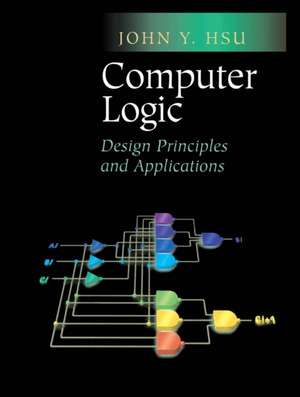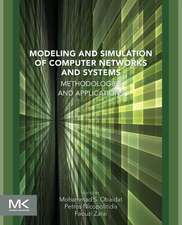Computer Logic: Design Principles and Applications
Autor John Y. Hsuen Limba Engleză Paperback – 7 sep 2012
| Toate formatele și edițiile | Preț | Express |
|---|---|---|
| Paperback (1) | 302.39 lei 38-44 zile | |
| Springer – 7 sep 2012 | 302.39 lei 38-44 zile | |
| Hardback (1) | 338.49 lei 6-8 săpt. | |
| Springer – 2 apr 2002 | 338.49 lei 6-8 săpt. |
Preț: 302.39 lei
Preț vechi: 377.99 lei
-20% Nou
Puncte Express: 454
Preț estimativ în valută:
57.87€ • 60.19$ • 47.77£
57.87€ • 60.19$ • 47.77£
Carte tipărită la comandă
Livrare economică 11-17 aprilie
Preluare comenzi: 021 569.72.76
Specificații
ISBN-13: 9781461265429
ISBN-10: 1461265428
Pagini: 216
Ilustrații: XIII, 198 p.
Dimensiuni: 178 x 235 x 11 mm
Ediția:Softcover reprint of the original 1st ed. 2002
Editura: Springer
Colecția Springer
Locul publicării:New York, NY, United States
ISBN-10: 1461265428
Pagini: 216
Ilustrații: XIII, 198 p.
Dimensiuni: 178 x 235 x 11 mm
Ediția:Softcover reprint of the original 1st ed. 2002
Editura: Springer
Colecția Springer
Locul publicării:New York, NY, United States
Public țintă
Professional/practitionerCuprins
1 Introduction.- 1.1 Prolog.- 1.2 Digital Concept.- 1.3 Number Systems.- 1.4 Number Conversions.- 1.5 Unsigned Integers Vs. Signed Integers.- 1.6 External Codes.- 1.7 Digitizing Concept.- 1.8 Summary Points.- Problems.- 2 Boolean Algebra.- 2.1 Boolean Constant Vs. Boolean Variable.- 2.2 Basic Laws.- 2.3 Basic Theorems.- 2.4 Other Logical Operators.- 2.5 Algebraic Simplifications.- 2.6 Karnaugh Maps.- 2.7 Summary Points.- Problems.- 3 Transistor Circuits.- 3.1 Introduction.- 3.2 Scale of Integration.- 3.3 Bipolar Transistors.- 3.4 Unipolar Transistors.- 3.5 Electronic Design Issues.- 3.6 Digital Waveforms.- 3.7 Summary Points.- Problems.- 4 Combinational Logic Circuits.- 4.1 Basic Logic Gates.- 4.2 Other Types of Logic Gates.- 4.3 Combinational Circuit Design Cases.- 4.4 Binary Adders.- 4.5 Carry Propagated Adder.- 4.6 Multiplication Tree.- 4.7 Programmable Logic Arrays.- 4.8 Memories.- 4.9 Summary Points.- Problems.- 5 Sequential Logic Circuits.- 5.1 Sequential Circuit Elements.- 5.2 RS Flip-Flops.- 5.3 Other Types of Flip-Flops.- 5.4 Sequential Circuit Design Cases.- 5.5 Sequencer t2167.- 5.7 Verilog.- 5.8 Summary Points.- Problems.- APPENDIX A Acronyms and Abbreviations.- APPENDIX B Logic Symbols and Equations.- References.














